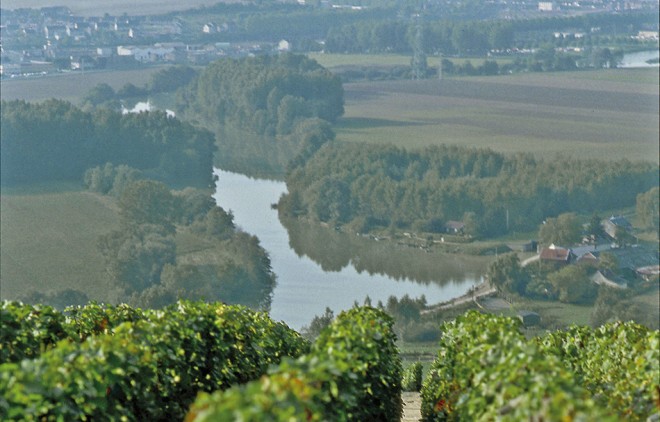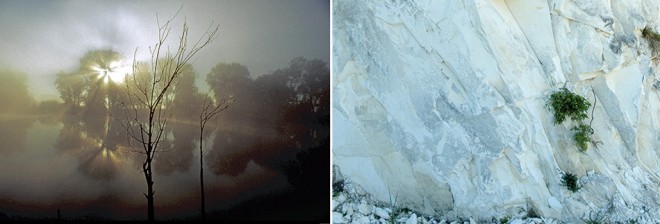
Part of the Champagne region, the Marne Valley extends from the city of Tours-sur-Marne to Château-Thierry. It stretches over one hundred kilometers and two French ‘départements’, the Marne and the Aisne, all the way to the limits of Seine-et-Marne.
As its name indicates, the Marne Valley follows the river of the same name. It offers a landscape of rolling hills, small villages with narrow winding streets and colorful vineyards that change with every season. Vines are planted on both banks of the river, however those on the north side benefit from a more favorable Southern to Eastern sun exposure.
Of the more than one hundred villages that are listed as part of this valley, only two have been granted the rank of ‘Grand Cru’, Aÿ and Tours-sur-Marne. Many more made it to Premier Cru status, such as Mareuil-sur-Aÿ, Hautvillers—legendary cradle of the Champagne region because of its monastery and its cellar-master-monk Dom Perignon—Cumières, Pierry, Mutigny …

Most of these villages are located at the Eastern end of the valley, around the city of Epernay. Their ranking reflects the importance given to the presence of chalk in the soil and subsoil of Champagne. Chalk is very present there. In the village of Fleury-la-Rivière one can actually admire the presence of fifty-million-year-old marine fossils and their chalky skeletons in the famed ‘shellfish cave’. The Chardonnay and Pinot Noir grape varieties dominate in this area, that some refer to as the ‘Greater Marne Valley’. Overall, Chardonnay amounts to only 16% of planting, while pinot noir amounts to 23%. Several major Champagne houses are located in this area: Billecart-Salmon or Philiponnat in Mareuil-sur-Aÿ, Deutz and Bollinger at Aÿ, or Jacquesson in Dizy.
West of Châtillon-sur-Marne, chalk tends to be found more deeply buried in the ground. The top soil is made of calcareous clay and clay marls. Pinot Meunier is the grape of choice in that area and makes up over 60% of the total Marne Valley.
A light juice and dark skin grape, Pinot Meunier tends to be the lesser considered of the three dominant grapes of Champagne. It does not have the finesse, or liveliness, or delicateness of its illustrious counterparts, Chardonnay and Pinot Noir. However Pinot Meunier has been experiencing some sort of a comeback lately. Many winemakers are now showcasing it in their range. They vinify it on its own, produce 100% Pinot Meunier cuvees, keep a special tank for its still wines which they mix in a ‘solera’ fashion, and they even have single vineyard Pinot Meunier releases … In short the ugly little duckling of yesteryears has been metamorphosed into a promising young prince. In Baslieux-sous-Châtillon, Eric Taillet even launched the ‘Meunier Institut’, entirely dedicated to that favorite grape of his.

Pinot Meunier also has the capacity to adapt to adverse weather conditions, such as those of the Marne Valley where ocean and continental influences meet to produce winter frosts, heavy spring rains and cool summers. The grape variety tends to ripen late. It requires patience. But growers who can take their time are rewarded. Pinot Meuniers can be fruity, supple, round and structured. They can liven up a rosé or bring freshness to a blend. They have a capacity to age, and make excellent reserve wines.
The Marne Valley, geographically the part of Champagne closest to Paris, may turn out to also be the region’s best asset for the future. Because a lot of innovative young wine makers are making the area their own.